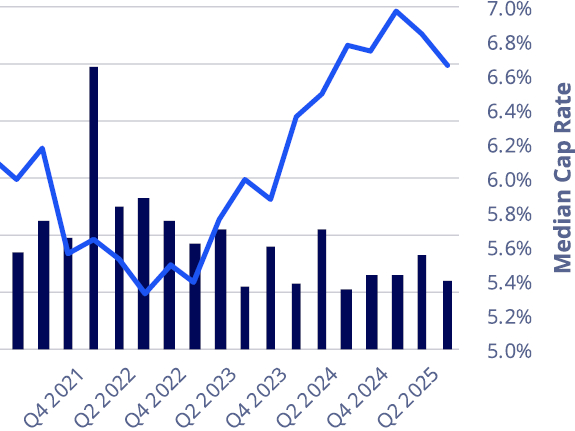Management Matters with Mike Myatt: When to Replace a CEO
I often receive inquiries from board members wanting to know when it is time to consider replacing the CEO. While it is refreshing to know that at least some board members are actually paying attention to CEO performance, the decision to replace a CEO not only requires a complex analysis, but the wrong decision will…
I often receive inquiries from board members wanting to know when it is time to consider replacing the CEO. While it is refreshing to know that at least some board members are actually paying attention to CEO performance, the decision to replace a CEO not only requires a complex analysis, but the wrong decision will have far reaching consequences. In this week’s column I’ll share my thoughts on the right reasons to transition the CEO. Before I address the question at hand, for contextual purposes, I believe it’s important to actually define the role of the board of directors. While there are certainly a variety of opinions as to the roles and obligations of a company’s board of directors, from my perspective they can all be boiled down into four simple responsibilities: 1. Shareholder Accountability: A board member’s primary responsibility is to act in good faith as a fiduciary in representing the long-term best interests of shareholders. A board’s actions and decisions must be able to pass the litmus test of public scrutiny (legally, morally, and ethically), rise above personal agendas, and always place shareholder interests above all else; 2. Corporate Governance: A board must insure that the corporation’s charter and by-laws are adhered to. Moreover a board must use its best efforts to hold executives accountable for insuring that corporate actions fall within other legal, financial, regulatory, and compliance boundaries. Ignorance and apathy are not the traits of a good board. Great board members are proactive, involved, supportive, consultative, experienced, and savvy. They know the rules, play between the lines, and do the right things. 3. CEO Oversight: It is the board’s job to select the CEO, provide the CEO with support and guidance, and to hold the CEO accountable. Good boards exercise great care and prudence in profiling CEO candidates, recruiting the right CEO for the job, providing the CEO with a clear job description, successfully onboarding the CEO, and holding the CEO accountable for meeting a set of clearly defined expectations. Good boards do not attempt to micro-manage a CEO, rather they understand their highest value in being a value added resource for the CEO focused on helping the CEO become successful. 4. External Visibility: A key responsibility of the board is to serve as an external champion of the corporate brand. Board members should have a clear understanding of the corporate vision and mission, and where prudent, evangelize the message for the benefit of the corporation. Whether this requires providing networking assistance, investor relations support, or engaging the media, a highly regarded and active board can add substantial value to the enterprise. Let’s turn our attention back to the original topic. In the text that follows I’ll offer several points that will help a board evaluate whether or not they have the right CEO for the job:* Tenure: I have taken a public and very outspoken stance against CEO term limits. I firmly believe that there is no such thing as a standard shelf-life for a CEO. No rules of thumb apply when evaluating whether a CEO has outworn his/her usefulness purely from a chronological perspective. I’ve witnessed CEO’s where the company has outgrown their skill sets, and/or abilities within a year of hire (a bad hire…), and I’ve also observed many instances of CEOs that have successfully guided companies for 20 years. The question is not how long a CEO serves, but rather what he or she does while serving. Whether age 32, or age 72, a board must ask themselves, is our CEO doing the job, and perhaps the better question is, are they the best CEO for the job? * Performance: The topic of performance is a multi-faceted issue. A CEO’s performance should be benchmarked against a variety of key performance indicators which are clearly spelled out in the chief executive’s employment agreement. When evaluating performance, a board must evaluate whether a lack of performance exists across all areas or in a single area, whether the lack of performance is a short-term aberration vs. the likelihood of it being a burgeoning problem, and whether the CEO can be coached through the performance gap or whether the lack of performance is an irreconcilable issue. * Ethics Violations: The character of the CEO is often synonymous with the brand of the enterprise. Once a chief executive has violated the public trust, or made a gross or negligent error in judgment which could taint the corporate brand, a board should move swiftly to restore the integrity of the corporation. Many things can be spun, justified, rationalized, or managed, but a lack of ethical behavior on the part of the chief executive is not one of them. * Loss of Confidence: Once the board, the employees, the capital markets, the press, or other key constituencies have lost confidence in the CEO, the board must replace the CEO. A CEO cannot lead, motivate, or inspire without the trust and confidence of those they serve. * Lack of Development: The corporate enterprise and the business world in general, are dynamic, fluid, and evolving environments. Therefore great chief executives cannot be static in their personal or professional development, or in their strategic and tactical approach to doing business. A CEO that does not exhibit the ability to change, innovate, and grow with the world around them is someone who will likely need to be replaced. In the final analysis, the board’s decision as to whether a CEO should be replaced is a decision that should be made within the framework of managing risk and opportunity. The board must weigh the transitioning a CEO against the financial costs, the impact of the business disruption and lack of continuity that can come with replacing the CEO, the market reaction to a change in leadership, and whether the decision is ultimately motivated by right thinking.






